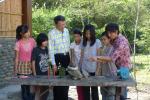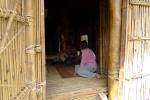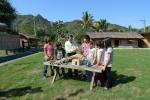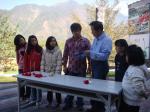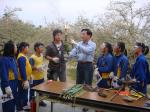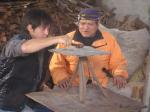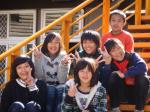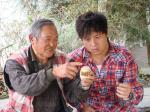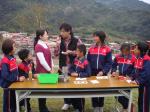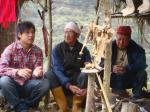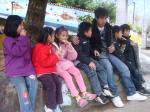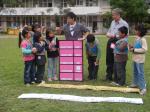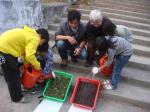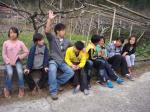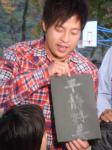Episode 73: Ramie
For the Sediq in the past, ramie is an important part of their lives. In a traditional village, almost every home owns a ramie garden. The Sediq women would use the ramie fiber to weave them into ropes, clothing, and blankets. How did they turn these plants into rolls of ropes? And what is the science behind the process of making these ropes?
Episode 72: Resin Lamp
Resin actually has a lot of viscosity. The Bunon people would use it as a glue when making instruments. But, where did the resin come from? In the Bunon tradition, they only take resin from trees that were wore down by animals. They do not cut open trees to get them. Resin are also used in ceremonies. It symbolizes passing down the torch. Therefore, the resin bears a special meaning for the Bunon people.
The science teacher shows us that the resin can even be used as a torch! The Bunon ancestors sure are clever!
Episode 71: Whipping Top
During the free time between planting and weeding, Bunon boys spin tops for entertainment. They use whips to make tops go as fast as they can. The game symbolizes Bunon’s wish for millets to grow faster. The teacher explains the best place to whip the top as well as the behavior of the axis before it stops.
Episode 70: Preservation with Wood Ash
Before there were refrigerators, indigenous peoples would smoke meat to preserve it. However, there is another way to preserve food. This episode’s indigenous expert uses wood ash to seal bottles. Using water, wood ash can be hardened to prevent molds and repel bugs. Sometimes they would use smoke to get rid of bugs in the house. It works the same way for food! This kind of natural preservative is even better and healthier than modern artificial preservatives! By absorbing the moisture in the air, wood ash can stave off the black beans’ expiration date.
Episode 69: Smoked Meat
The Sediq, who live near mountains and forests have always been excellent hunters. Every time, they could bring back a lot of meat, sometimes more than they can bring home. In this episode, Taws uses experimentation to show kids why elders need to smoke meat, and how they preserve food without a refrigerator. Through heat, the quality of protein changes, moisture decreases, but the nutritional value stays the same. It is just one of the many indigenous methods for preserving food.
Episode 68: Picture Calendar
The Bunon uses the lunar calendar. A year is divided into 12 months, and one month into 30 days. They use knots to record days. One knot equals one day. 30 knots fills a month. When hunters go into the mountains to hunt, they also use knots to record days. In this episode, Taws shows us the different phases of the moon. When the Earth, Moon, and the Sun is one line, that is the first of a lunar month, and we can’t see the moon. One rotation of the moon equals one month.
Episode 67: Terraced Fields
The Tao of Lanyu know that water is essential, therefore, they treat the development of every terraced field with the utmost respect. Therefore, we find a very smart tool in each of the fields, a barrel. What role does it play in a field? Through the students observation, we find out the differences between the Yeheng fields and Lanyu’s fields.
Episode 66: Sumac
Located in Taiwan’s Nantou County Renai Towship, there is a very special tree called the Sumac. One hundred years ago, when mountain indigenous people were unable to acquire salt for their diet, the Sumac solved this problem. Indigenous people used this tree to get a balanced diet. What kind of plant is this amazing tree?
Episode 65: Underground House Drainage System
In this episode, we delve into the traditional architectural design and construction of the underground house’s drainage system. To understand the scientific principle behind it, the science teacher leads kids to pick rocks and build a drainage system of their own. Also, using bottles and absorbent powders, the kids learn why the Tao people must smoke flying fish in their own homes.
